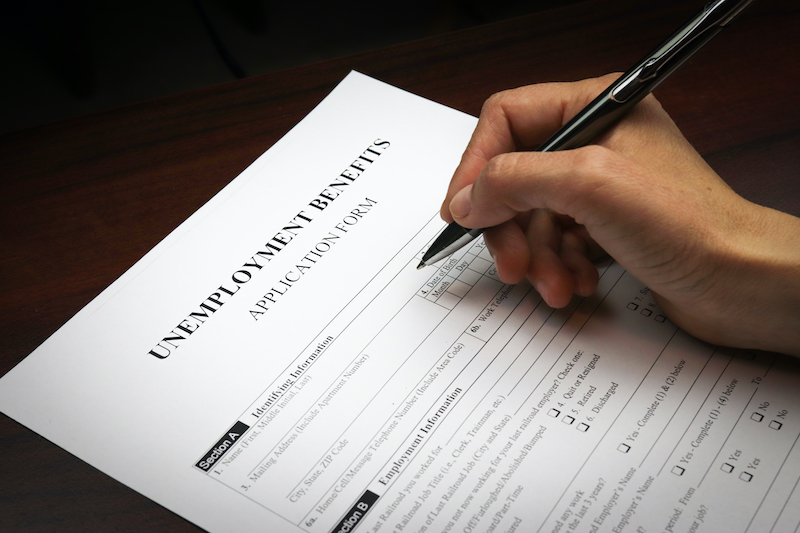As an employer, it is inevitable that you will face a claim for unemployment benefits from a previous employee at some point. Many employers are not sure how the unemployment benefits system works, what it means to get a claim filed against you as a business, and whether you should fight the claims that you receive.
This article will answer those questions as well as provide you with information on how to successfully defend against unemployment benefits claims. If you want our legal team to help fight against an unemployment benefits claim filed against your business or help you prepare the legal strategy for your defense, contact us at 480-536-6122 or at intake@wordpress-457010-3165254.cloudwaysapps.com.
How the System Works
All employers in Arizona pay money to the Arizona Department of Economic Security per each employee they employ. The payment amount is based upon what is known as an employer rating. In other words, you are paying into a self-funded insurance pool run by the State of Arizona.
Your rating is assigned based upon the length of your existence as a business and the number of claims you have received from, and paid out to, previous employees in the past. You will pay the assigned rating percentage for each employee you employ up to the first $7,000 you pay to that employee.
Before the COVID-19 pandemic, a new business employer rating was 2 percent. In 2021, despite not having any claims against our account, that rating increased. For example, my employer rating jumped to over 9 percent, despite my business not having any claims paid out to previous employees.
As a standard, an employee is eligible for unemployment if he/she was let go or laid off without cause or if he/she experienced a significant reduction in hours. In addition, the employee must reach a minimum earnings threshold. This is either 1) 390x Arizona minimum wage in your highest earning quarter and the total of the other three quarters must equal at least one half of the amount in your higher quarter, or 2) at least $7,000 in total wages in at least two-quarters of the base period, with wages in one-quarter equal to $5,987.50 or more.
If the employee quits or is fired for cause (that fits the Arizona DES requirements), then they will not be eligible for unemployment benefits. In addition, during non-COVID times, the past employee must show proof that they are actively applying for jobs and that they are not unemployed by their own choosing.
What it Means to Get a Claim
When your business gets a claim for unemployment benefits, it means that an employee who you previously employed has requested that the Arizona Department of Economic Security pay them unemployment benefits. The individual has to fill out a request for benefits form that states the reason for separation from employment, the dates of employment, the wages earned, and any other relevant information.
Next, the Arizona DES office mails an unemployment claim to the employer on official letterhead. The notice states the reason why the employee filed for unemployment benefits and provides the employer a chance to respond. This is the reason to make sure you have the right statutory agent in place for your business so you do not miss important legal notices. (See What Happens if You Don’t Have a Registered Statutory Agent as well as Why and How to Choose a Statutory Agent in Arizona.)
In this response, the employer is given the chance to provide the dates of employment for the employee, the reason for separation from the company, any severance or additional pay that occurred at the time of separation, and any other pertinent information relating to the claim. It is important to provide a timely response to the Arizona DES office if you wish to refute the claims that the former employee made.
Following the employer response (if one is provided), the Arizona DES office makes a determination as to if a claimant should be granted unemployment benefits or not. Whether a claim is denied or granted, either side has the opportunity to appeal the decision and request a hearing/trial. This appeal goes to an administrative law judge (not a judge in court, but a judge who deals only with DES-related issues). At this telephonic appeal hearing/trial, both sides are given the chance to present evidence and witnesses relating to the unemployment claim.
For example, if a former employee claims they were not terminated for cause while the employer says they were, then the employee or employer might bring in other witnesses to state whether the employee did things that would have caused them to be separate for cause. Following this telephonic appeal hearing/trial, the administrative law judge makes a final decision.
Should You Fight the Claim
Most employers call our office when they have received a claim against them by an employee. The common question is: what should we do? If the employee quit or was terminated for cause, then the employer has the chance to fight the unemployment claim. After all, any successful claim by an individual against your business will result in you receiving a higher rating number the following year, meaning you will be paying anywhere from 1 to 5 percent more on the first $7,000 paid to each employee.
However, careful consideration should go into this decision. One factor to consider is whether the employee might have other claims against the employer that they have not yet pursued through legal means. Sometimes it makes sense to not put the employee’s back against the wall by fighting unemployment claims, only to spur them to bring their bigger claims.
Another factor to consider is whether the business has kept good records to prove the fact that the employee was fired for cause and/or quit. It is not worth spending a lot of time and money fighting an unemployment claim if you do not have the proof to support the denial of the claim.
How to Successfully Defend Against Claims – Get Your Employment Documents Ready
The best way to prepare for the denial of these unemployment claims is to have your employment practices tightened up. For example, if you are going to terminate an employee for cause for not showing up to work on time, it is important that you have a written policy stating that coming to late tardy is unacceptable and it is important that your office documents each time the individual comes in late.
The Arizona DES office does side on the employee side if the only evidence available is “he said, she said” evidence. With that, getting your form offer letters, employment agreements, employment handbooks, disciplinary forms, and termination letters prepared is critical to your success in fighting unemployment claims.
Contact Counxel Legal Firm
If you need help with getting your employment documents ready, or if you would like assistance with responding to an unemployment claim, then contact us at (480) 744-6621 or at request@counxel.com. Don’t forget to check out the good things that others are saying about the services they received from Timothy Coons on Google.
This article is intended for informational purposes only and does not constitute legal advice for your specific situation. Use of and access to this article does not create an attorney-client relationship between you and Counxel Legal Firm. Please contact request@counxel.com or (480) 744-6621 to request specific information for your situation.
*Conveniently located off the 101 Freeway and the US 60 in the middle of Phoenix, Scottsdale, Tempe, Chandler, Gilbert, Mesa, and Queen Creek!



